Introduction
My thesis statement includes the hypothesis that Homoeopathy played an important role in the medical history of South Australia. I was hoping to give evidence that Homoeopathy, since the beginning, was significant in the life of South Australians, and therefore was a history worth recording. No conclusive documents had been written in this context. On my quest I was richly rewarded and was able to support my hypothesis.
I am convinced that my findings will enable the Homoeopathic community in South Australia to find a new sense of pride in their profession and will allow us to learn from past mistakes. I hope it will give us a source of inspiration for the problems we face in our daily lives and inspire us to use homeopathy with great advantage.
“Historical knowledge enables us to place our perceptions of the contemporary world into meaningful context, the cause and effect relationships between events that serve as the basis for future expectations.”1
The history of Homoeopathy in South Australia was similar to the history of Australia and almost a blue print of the history of our healing art throughout most of western civilization. Australia was one of the last larger colonies to be settled by the English, and since this took place in the 1800’s the continent became almost a playground for new inventions and revolutionary ideas. Unsurprisingly, from this ‘hot pot’ of different nations, Homoeopathy found its way to our shores.
There have been many supporters and key people who maintained Homoeopathy in Australia. Their lives and struggles give us a good idea how life must have felt in the trenches of medicine. Some of these people and their achievements will give us a new sense of hope and trust in Homoeopathy in Australia.
History of Homoeopathy in Australia
Homoeopathy was one of the most preferred methods of treatment in the middle of the Nineteenth Century. At that stage allopathic scientific medicine had not yet established itself as the dominating form of treatment, which was to change considerably in the early Twentieth Century. Professional boundaries were still being drawn and the British Medical Association was still in its infancy.
Victoria
Is has been claimed that either Mr. Thienette de Berigny, or Dr John Hickson brought Homoeopathy to Melbourne in the 1850’s. Beringny settled in Victoria in 1855, whereas Hickson already had a Homoeopathic practice in Melbourne’s suburbs by 1850.
The international debate about the pros and cons of the new science, Homoeopathy, was sparked by Beringny in 1855, in his passionate speech in the Protestant Hall in Melbourne where, in Hahnemanian tradition, he attacked allopathic practitioners.
“Surely, an old practitioner of lazy disposition, doing things by habit, having enough dupes to patronize his mischievous practice, is not going to change his casual mode of prescribing complicated mixtures, grossly calculated to allay pains, and satisfy the patient so eagerly demanding immediate relief…But would that not be the death-blow to a whole profession, for which medical associations are formed, not for the good of human kind, but for the defense of a lucrative monopoly of infatuated credulity?…Homoeopathy can never be the source of future chronic ailments, as those of the ordinary practice commonly are.” 2
Ready to conquer the new colony, Homoeopathy had well and truly arrived! In 1837-1886 Homoeopathy experienced an upswing in popularity and Homoeopaths managed to work freely up to the 1890’s.
The first Victorian Homoeopathic pharmacy was established in 1864 by E.G. Gould in Melbourne. Five years later in 1869 the first Homoeopathic hospital opened its doors to the general public.
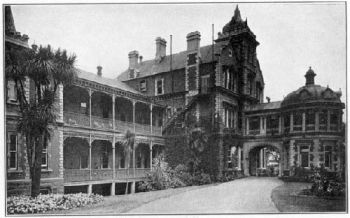
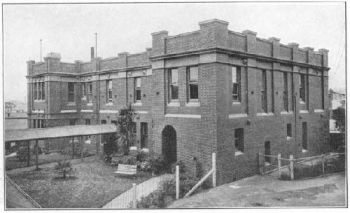
It existed for forty-six years, with 225,000 cases treated. The hospital had 86 beds and cost $ 200,000. It had one of the best amphitheatres in Australia and a large out-patient department. 3
In 1936 the orthodox school of medicine took over, and the hospital was renamed Prince Henry Hospital.
In 1870 a journal “The Australian Homoeopathic Progress” was established in Melbourne.
Queensland
In Queensland Homoeopathy was practiced by Dr. Stephen Simpson, student of Hahnemann and Author of the ‘Principle Advantages of Homoeopathy’ (1836) which was most likely the first publication in English on the subject of Homoeopathy. In 1848 he was involved with the establishment of the Brisbane General Hospital and became one of its trustees. After some time, Simpson eventually returned to England. 4
In 1858 Benjamin Wilson, a Baptist clergyman, settled and practiced Homeopathy in Brisbane.
Brisbane seemed to be, as a large settlement, quite civilized. Unfortunately, physicians working in the gold fields had slightly different experiences, as Philippa Martyr in her book ‘Paradise of Quacks” describes:
“Later, in the 1870’s Harold Finch met in Queensland an old German doctor and stated, “Although he was one of the cleverest men in his profession I ever saw’, recollected Finch Hatton, “and a wonderful surgeon beside, he never made any money in Queensland because he was a Homoeopath”:
The Queensland government, not contented with figuring before the civilized world as sordid and immoral politicians, never lost an opportunity of proving themselves benighted barbarians as well. Accordingly, they refused to recognize a Homoeopathic physician’s diploma; and he is, therefore not legally able to recover his fees.
“Finch-Hatton related how the Homoeopath suffered for this, and for his own good nature. Despite his abilities, and his popularity, hardly any of his patients bothered to pay him. When subpoenaed to attend an inquest at the town of Nebo, some twenty seven miles from his residence, three men jumped his claim and he was subsequently unable to move them. Eventually they starved him out, and he had to leave the gold fields.”5
Western Australia
In 1857, Rosendo Salvado, a Benedictine monk dispensed Homoeopathic remedies among Australian Aboriginals near Perth. He first arrived in 1846 then returned to Europe. After a stay in Rome and Perth, he returned to Norcia bringing Homoeopathic texts with him which enabled him to practice Homoeopathy.
New South Wales
In 1902 a Homoeopathic hospital in the suburb of Glebe opened its doors. William Moore, a Homoeopathic physician funded this hospital after his retirement.
Although it is now in allopathic hands and operating under the public hospital system, a bed is always provided for the request of Homoeopathic treatment. The hospital continued to fulfill the bequest that stated that a bed should always be provided in the interest that Homoeopathy may revive. In 1985 the Australian Medical Homoeopathic Society for Research and Education (AMHSRE) approached the Sydney Homoeopathic Hospital to use the accumulated funds in Moore’s bequest, to have the hospital extended and modernized, to include a Homoeopathic dispensary and clinic. The Sydney Area Health Service vetoed the proposal, and closed the hospital in 1989.
At that time the AMHSRE was replaced by the Australian Medical Faculty of Homoeopathy (AMFoH) which lobbied the health department to provide hospital facilities to satisfy the growing demand for Homoeopathic treatment. Eighteen months later, on August 1, 1990, a Homoeopathic outpatient clinic was opened at the nearby Balmain Hospital, which still operates to this day. 6
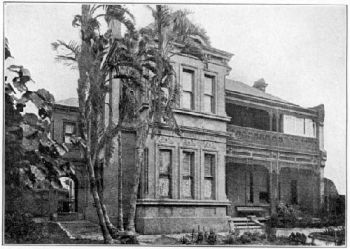
Tasmania
Dr. Atherton is the first listed Homoeopath in Hobart. He arrived on the island in 1866. Atherton had a flourishing practice until his death in the 1870’s. This practice was then taken over by Dr. Harry Benjafield, who was a key figure in the establishment of the Hobart Homoeopathic Hospital in 1899. The first Homoeopathic pharmacy opened in 1883. 7
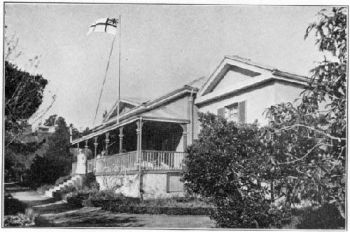
The hospital in Hobart Tasmania was established in 1900 with 23 beds and a training school for nurses.
The dark ages of Homoeopathy in Australia
Between the 1920’s and the 1940’s Homoeopathy experienced an almost deathly blow. The reasons why Homoeopathy suffered such a decline in popularity were many. This phenomenon occurred across the globe. One of the prime reasons was the lack of training facilities in Australia. Australian physicians had to go overseas to be trained in this healing art. Apparently there were only 17 graduates from Australia who studied in US schools between 1850 and 1905. Many Homoeopathic doctors were hired from England and had to go back to their home country when their contract in the hospital expired. Europe began to suffer under two world wars and many doctors were summoned to the home fronts to support their troops. Australian authorities strictly refused to employ female doctors. Allopathy experienced a rise in popularity since the introduction of penicillin, vaccinations and improved methods of surgery, with pharmaceutical companies becoming a strong force behind allopathic doctors. In the Melbourne journal “The Australian Homoeopathic Progress”, Dr. Hoyle stated that Homoeopathy was declining, since the number of doctors had dropped considerably. In 1911 there were 227 registered Homoeopathic doctors, whereas in 1931 only 19 practiced the art, with one Homoeopath in Western Australia leaving the “laity to prescribe for themselves to the limit of their courage”. 8
By the 1920’s the Homoeopathic hospital in Melbourne began to employ allopaths, and the British Medical Association responded by removing Homoeopaths from their blacklist, categorizing them separately. By the 1940’s the heydays of Homoeopathy were well and truly over. In this decade most Homoeopathic hospitals were incorporated into allopathic institutions.
Survival
In 1946, during those meager years, the Australian Institute of Homoeopathy was founded, which offered membership only to qualified Homoeopaths. This institution was mainly kept in existence by the relentless effort of Mrs. Gwen Reynolds, who held regular weekly meetings in her home.
Her persistent efforts included regular talks in Lion Clubs, Rotary Clubs, etc. The institute established the first course in Homoeopathy at the Nature Care College in Sydney. Every year, 20-25 students were trained with the course running for four years. The Australian Institute of Homoeopathy began increasingly to organize as a professional group, advertising Homoeopathy, and in the 1960’s the alternative life-style movement helped to create a new market for the distribution of Homoeopathic remedies.
Professional organizations now include the Australian Homoeopathic Association, the Australian Council for Homoeopathy (Victoria), the Australian Homoeopathic Association (New South Wales), the Australian Association (South Australia), and the Australian Association for Professional Homoeopaths. The Australian Homoeopathic Association has been producing its own scholarly journal, Similia, since 1987. Homoeopathic education has also been organized in a tighter structure with the Victoria College of Classical Homoeopathy (established in 1989) and the Australasian College of Hahnemannian Homoeopathy (est.1989, by Isaac Golden). In 1992 the South Australian College of Homoeopathy in Adelaide was founded, and in 1995 was renamed the Adelaide Training College of Complementary Medicine. 9
Homoeopathy in South Australia — Homoeopathy and the Early Settlers
The Germans
In the early 1800’s the German emperor passed a law in the attempt to unite German religions, which in turn created religious persecution for all congregations who did not conform. These new laws made it impossible for Lutherans to practice their old form of worship. Pastors who did not conform were sent to prison and had their goods confiscated. Parishioners were not allowed to have their children baptized and confirmed. Whole congregations decided to migrate, seeing no end to the religious persecution.
In 1843 an Adelaide newspaper reported that German immigrants had settled in Bethany (near Tanunda) and proved themselves to be a valuable class of colonists. They were respected for their hard-working, sober and persistent nature and soon their customs, religion, language and houses dominated the face of the valley.
Being peasant farmers of origin, the first Germans made a living in market gardening. Apart from the migrants who had flocked to the gold fields to try their luck, the Germans lived under the banner ‘we make gold with the plough’ and established themselves in wheat, wine and wool production. In contrast to the English farmers, who very early on went into monoculture farming, the Germans never put all their ‘peas in one pot’. Never being dependant on only one crop, even in hard times there was always food on their tables.
The first priority German settlers had when they occupied their new land, was to build a church and a school. Worship was most important and their lives centered around the church.
Because of their language and customs plus the locations of their settlements, they were cut off from the infrastructure of a larger city, which consequently meant that they had to become extremely self-sufficient.
In the meantime, Homoeopathy, being the popular form of medicine in the mid 1800’s, soon found its way into the German houses and missionaries. The Lutheran Archives in Adelaide are in possession of a substantial number of homoeopathic books bequeathed from German migrants as well as homoeopathic doctors.
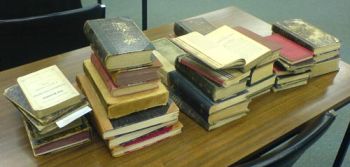
So too is the museum in Tanunda, which also has displays of homoeopathic remedy kits, including many more books. Most of the books in the Lutheran Archives and the Tanunda museum are absolute homoeopathic treasures and mostly written in German.
One of the most interesting books in the Lutheran Archives was the “Domestic Physician” by Constantine Hering. One of the most influential homoeopaths, and a traveler and migrant himself, Constantine Hering wrote twelve ever improving editions of this book, which clearly indicated the public demand.
The “Domestic Physician” was published in German and English to serve the growing medical needs of migrants leaving their home countries in the attempt to find a future for themselves elsewhere. This most valuable book appeared to be well used and the spine of the book was repaired several times. The “Domestic Physician” included a practical guide in how to administer remedies, a Materia Medica, handy tips on child rearing, healthy life choices, diet tips and instructions on how to purify water.
The inspiration to write this book came to Hering while he lived in Paramaribo, South America, where he was employed as a physician in a mission looking after the health of seven German families. He decided to dedicate the book to all missionaries, to provide them with enough knowledge to look after their congregation, even giving advice on where to obtain affordable homoeopathic remedies. Hering ask his readers to acquire more knowledge about uncommon diseases and their treatment (on the search for new remedies) and to report results back to the author of the book, in order to help the distribution and development of the new science of Homoeopathy.
As with all new and revolutionary inventions, it was rather difficult to get it past the superiors of the missionaries, and Hering found himself having a fine income from his brain-child as it sold exceptionally well back home in Germany.
Some people in charge of the congregations were so conservative, that it was not an easy task to accept Homoeopathy, and it was the source of heated discussions within the Lutheran church. Somehow the homoeopathic books made their way into the German homes, being valued for their effectiveness and affordability. Shortly after, homoeopathic remedies were sold in the general stores until homoeopathic pharmacies opened in the Barossa Valley.
In the book ‘The Barossa – A vision Realised’ under the chapter Medical services we find:
“There were several Homoeopathic doctors, who almost without University training, treated many patients, with Johann Zwar of Neukirch being one of them…” 10
The Homoeopathic Doctor Johann Zwar
Zwar belonged to a Wendish (Sorbish) minority living in Germany and as a Lutheran it appealed to him and many other Wendish people to migrate to Australia. Johann always displayed leadership qualities especially when he led a group of 92 Wends to charter a ship to travel to Australia.
Several years later his first wife died of a long-suffering tuberculosis and he eventually re-married his second wife Anna, with whom he had several children. On the birth certificate of his son Bernhard Zwar, we find under ‘Rank of Profession of Father’ the title Homoeopathic Doctor.
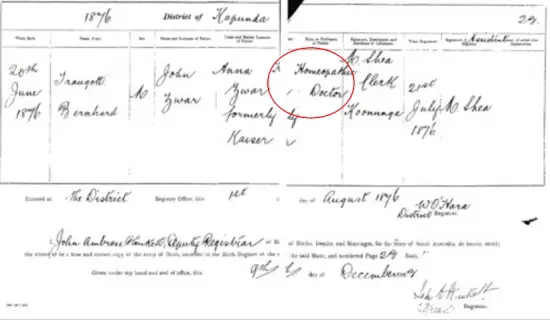
In a letter dated 1868 Johann Zwar mentions Homoeopathic remedies:
“With that mail (some time ago) I had written to Brother Dallwitz at Wawitz that he should get some Homoeopathic things for me…”
It is not known when Johann Zwar became a Homoeopath. The story goes that he may have acquired his skills back home in Saxony and it is also believed that he offered his services as a Homoeopathic doctor in the Barossa Valley for over 50 years.
Arthur Zwar, a grandson, thought that George Fife Angus used his influence to help Johann to become a registered Homoeopath, and that this happened after Johann was naturalized in 1855. A granddaughter said that her father often told her that a South Australian Member of Parliament suffered with cancer, and as a last resort consulted Johann Zwar for Homoeopathic treatment. The Member of Parliament was cured and decided that Johann should be granted the title Homoeopathic doctor.
The third Zwar house was built with the two front rooms set aside, with one as a practice room and the other as the waiting room. When a patient needed time off work, Zwar issued a doctor’s sick certificate. In 1906 Zwar’s wife Anna writes to her brother in Germany:
“Johann turned 84 on the 16th of October, and can still visit his patients, and still drives 15 to 20 miles to patients.” 11
Homoeopathy was the preferred mode of treatment in the Barossa Valley. Whilst visiting the Valley I came across the Luhr’s Cottage, on Light Pass Rd, in Light Pass, South Australia. This cottage had been saved from demolition thanks to the relentless efforts of Margaret Zweck, who as a collector of old wares and antiques managed to restore the cottage back to its original condition. It is authentically furnished in traditional German settler style, including Homoeopathic remedies and books.
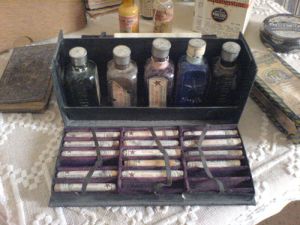
The village of Light Pass also had a hospital called “The Willows” which closed in 1960. One of the first estate owners had been the ‘bone-setter’ of the area, possibly the only one close to a nearby surgeon. The Scholz family still own and run the estate as a winery and are very proud of their allopathic medical heritage, being the proud owners of the first X-ray machine in the area. Unfortunately, the family was not very forthcoming when asked about the mode of treatment, and strictly denied to have had any connection with Homoeopathy. However Michael Bollen, another researcher, has mentioned that “The Willows” was indeed a Homeopathic Hospital where Homeopathic remedies were used. Later they made their own ointments which were widely distributed throughout the country.
Early Homoeopathic supply in the Barossa Valley
Most early remedy chests found in the Barossa Valley came from a pharmacy in Leipzig, Germany. Most likely, immigrants already came equipped with Homoeopathic remedies and literature, or as mentioned earlier, bought their Homoeopathic supplies from general stores. One of the finds in the Lutheran Archives was a catalogue of the Leipzig Homoeopathic pharmacy, displaying a large section of travel remedy kit equipment, and the promise to send their wares worldwide.
Heuzenroeder, Chemist, Barossa Valley

Brauer Pharmacy
Like so many of the German immigrants who settled in the Barossa Valley in the 1840’s, the Brauer family relied on Homoeopathic remedies. This tradition persisted among the descendents of the settlers, and in 1929 the Brauer family established a pharmacy in South Australia’s Barossa Valley. In 1972 the pharmacist Warren Brauer and his wife Joy, a nursing sister, began to manufacture propriety Homoeopathic remedies. In 1984, they started what is now the production and laboratory facility of Brauer Natural Medicines and produced many simplex (single) Homoeopathic remedies and complex (compound) medications. 13
Other key-people and Homoeopaths in South Australia
Thanks to the inexorable work of Barbara Armstrong, who issued her article in the Australian Homoeopathic Society’s journal, on the ‘Introduction of Homoeopathy in Adelaide’ (Similia December 2006, Vol.18:2). In this issue or on the AHA’s website one can find a list of important people in Homoeopathy.
William Breston Brabury – A Homoeopathic lay practitioner, born the 13th May 1832, lived at Moralana, Stirling North and later in Port Augusta.
Thomas William Charlesworth – Charlesworth practiced in Angaston and was listed as a Homoeopath in the South Australian Directories from 1876 until 1880. He died 16th December 1879.
Rev. R.W. Holden – A Homeopathic lay practitioner, who studied allopathy and Homoeopathy privately for over seven years in England. Holden provided medical treatment for the poor whilst working in parishes in Victoria and South Australia.
Samuel Kidner (1809 – 1883) – He had been described as Adelaide’s first Homeopath. I have been given evidence that Kidner was not the first homoeopath. Singleton who was a clerk of the SA Legislative Council, offered his services to the first Homoeopathic Dispensary for the poor…
‘… and remarked that he might call himself one of the pioneers of homoeopathy in South Australia. It was nearly ten years since he first read works on the homoeopathic system, and studied facts which lead him to the conclusion, long before his friend Mr. Kidner arrived, that it was said by Dr. Sharpe and others was true[sic] . From that time till this he had been a homoeopathist, and he might say a small practitioner – (a laugh) – for he had undertaken a great number of cases among the indigent poor; and he might say – he did not take credit to himself, but gave it to the system – in almost every instance he had been successful.‘ (Observer, 27/4/67)
Kidner studied the Homeopathic principles and later established himself as a Homeopathic chemist in the London suburbs of Bermondsey. Dr. John Epps said to be England’s first Homeopath took Kidner as one of his students under his wing. Despite being tutored by Epps, Kidner failed to apply for formal recognition of his studies. He came to Australia in 1857 to fill the position as a resident dispenser at a Sydney hospital. Unfortunately the position had already been filled. He then lived and worked for a few years in St. Kilda, Victoria. In 1860 Kidner came to Adelaide where he became the key figure in the establishment of a free Homoeopathic dispensary in 1867. He was listed as a Homoeopath at Flinders St. in Adelaide in the ‘Adelaide Almanack, Town and Country Directory and Guide to South Australia of 1867’. Later he practiced in the vicinity of Bowden. In 1882 at Port Rd, Hindmarsh where he became one of the pastors at the local church.
Horace Rose – A lay practitioner who lived in Kapunda, Quorn, Port Lincoln and Unley.
James Talbot – Another lay practitioner who lived at Peadney Belt, North Adelaide, Virginia and Penfield. 14
To this list of Homeopaths I would like to add:
John Barnes Funnel – A Homoeopathic doctor born in England, who arrived in Brisbane in 1865. He opened his Homoeopathic practice in Kadina for more than thirty five years. He died in Kadina on 8th March 1907.
Dr. Allan Campbell and Dr. William McDonald Campbell – The Scottish brothers set up the Children’s Outpatient Dispensary in Currie St., where they treated the sick, often free of charge and then formed a committee to raise funds to build a hospital for poor children.
Dr. Sylvanus James Magarey – The second son of Mr. Thomas Magarey (a supporter of Homoeopathy) studied medicine and surgery at the University of Melbourne. Magarey worked for some time as an Honorary Medical Officer and a foundation member of the General Committee of the Adelaide’s Children’s Hospital.
History of Homoeopathy in Adelaide – Adelaide in the mid-1800’s
The City of Adelaide was founded as a centre of a planned British colony for free migrants, promising civil liberties and freedom from religious persecution. This colony was quite different from the other colonies in Australia, in that the settlement did not share the convict history of the other states. The city of churches was settled by free people who held their head up high; this British province of South Australia became “the land of the brave and free”. As a free colony Adelaide was also financially independent from the “motherland” England being founded by farmers with their produce.
After a crippling draught in the 1860’s, the city experienced a flourishing economy. The production of wheat, the mining of copper and the wool industry became the basis for the settlement’s wealth.
The Major of Adelaide stated proudly at the end of the 1870’s :
“Social progress and municipal unity run concurrently, and the city is now full of inspiring life and hope, and a buoyancy which laughs at obstacles and will not recognize defeat.” 15
But of course this was not the entire picture. Adelaide also displayed the extremes of wealth and poverty. New migrants frequently arrived with high hopes and empty pockets. The infrastructure of the new colony was quite challenged by the constant arrival of new ships laden with migrants. The rents were high, the labor cheap, and the goods in the general stores were expensive. The people who did not arrive as the Lutherans did, as a group with different skills and enough finances to purchase their own land immediately, found themselves huddled together in already overcrowded cottages near the port, or in the poorer areas of the city. If luck was not on their side, they were classified as paupers living in poverty and ‘slum-housing’.
“In many instances, in the more densely populated parts of the City, the very foundations of the houses suffered from such fluid of the vilest description draining under them, that the occupiers of the premises are inhaling deadly gases resulting in certain death.” 16
Overcrowding, no mentionable sewage system, poverty and hot dry summers were the breeding grounds for all sorts of contagious diseases and were therefore a danger to society as a whole.
Adelaide’s population suffered two major epidemics, a typhoid fever in 1866 which took 209 lives, and in 1867 when there were 240 deaths from diphtheria.
The colony was also struck with the fact that South Australia had the highest infant mortality. The deaths of infants were even higher than in some parts of England or Wales.
“In Victoria the infant mortality rate, which included any death of a child under 12 month of age, for 1874 was 24%, in South Australia 30%.” 17
The infant mortality rate was a staggering 60% higher in the city of Adelaide than in the country districts. Most of the unfortunate children died within the warmer months during November and February, and most of them lost their lives to croup, diphtheria, scarlet fever, whooping cough, erysipelas, dysentery, measles and typhoid fever.
Because the spotlight was on the high infant mortality rate, another topic came to the public’s attention – the welfare of the colonies’ poor.
One has to enquire into the mindset of the rich in the colony, and Margaret Barbalet as historian gives an important insight in her book “The Adelaide Children’s Hospital”:
“The Victorian era was notable for its complacency and the Chartist demands further hardened many upper-class thinkers to the problems of the poor; it seemed dangerous to concede anything to the ‘mob’. The theories of Thomas Malthus and Charles Darwin were wrongly assumed to provide scientific substantiation for individualism – leaving the poor completely alone. The ethic of self-help meant that the poor should be discouraged from becoming dependant on the State and pauperism must be treated as a vice, even in children.” 18
To challenge this attitude was not easy and needed some true humanists in the colony to take matters into their own hands.
In 1867 during the two major epidemics the first Adelaide Homoeopathic dispensary was set up to provide medical aid for the poor.
“… as through it the poor of Adelaide, in proportion to the general amount of destitution, have gladly availed themselves of the opportunity of obtaining advice under the Homoeopathic system…” 19
The dispensary’s Annual of 1868 reports that many severe and chronic cases were successfully treated. A total of 1653 prescriptions were filled, of which 349 patients had been treated at the dispensary, and 62 patients had been seen at home. The results were that of the 349 patients treated, 7 died, 205 were cured and 16 cases much improved and 28 improved.
Diseases treated in the year ending in May 1868, from the Adelaide Homeopathic Dispensary.
The dispensary was run on a basis of subscription cards, which were received by the medical officers:Dr. Wheeler -Dr. Campbell and the dispenser Mr. E.S.Wigg.
The dispensary was located at 34 King William Street.
Barbara Armstrong states a few more facts about E.S.Wigg in her article “The Introduction of Homoeopathy to Adelaide”, but I would like to concentrate on the medical officer Dr. Campbell.
Help the ‘Kiddies’
In the same year when the homeopathic dispensary opened its doors to the poor, a newspaper report in 1867 shattered the conscience of the community. Sixteen of the colony’s poorest children, who died from the most dreadful case of neglect in a state institution at Brighton in 1867, brought the attention to Adelaide’s most vulnerable – the children.
“In one – in the infants’ ward – there were five little ones lying in one bed, with no nightdresses, and up to their necks in filth…Yes; in my opinion many of the children got that gangrene from the filthy state of the infants’ room. I do really think so, Oh, and I am sure I could not stand in the room myself.” 20
These sixteen children died of diphtheria, diarrhea, congestion of the lungs, and gangrene of the mouth after measles, and whooping cough. Half of those children suffered from skin diseases as a result of being ‘smothered’ with vermin.
The ignorance against the treatment of the children lifted, when three months later the foundation stone was laid for a new home for destitute children in Magill.
The health care for impoverished children was in general insufficient. In life-threatening cases, the child was admitted to the Adelaide Hospital, which at this stage was the only hospital in the colony. A hospital in the 1800’s was not a place for a child to be, there were no special wards accommodating the needs of a child. The child was exposed to:
“… the victims of ‘social evil’ (syphilis), the dying, indeed all the sights and sounds of a hospital before anesthesia, antiseptics or sewerage.” 21
The parents who could afford it, avoided the hospital at all costs, treating their children at home with a physician attending.
With the high infant mortality it took several more years to offer a solution tailored to the children of Adelaide. Allan Campbell, a medical doctor and Homoeopath became one of the pioneers, dedicating his life and work to bringing relief to the children of the city.
Dr Allan Campbell, a true health reformer, philanthropist and Member of of the Upper House, arrived in Adelaide on 24th of January 1867 and began practicing with Dr. Wheeler in the first Adelaide’s Homoeopathic Dispensary.
Campbell was born in the Barony Parish of Glasgow in 1836. He enjoyed his elementary education in the parish of his birth place and devoted himself to the higher branches of study, mainly mathematics and physical science. At first he wanted to become an architect; but with his health failing, he abandoned the idea, and applied himself to the study of medicine.
In 1867 he was licensed by the Royal College of Physicians, Edinburgh, as well as by the Faculty of Physicians and surgeons, Glasgow. At first he worked in a London Hospital, but soon decided to migrate to South Australia.
Dr. Campbell believed that “the welfare of people is the first great law”. To say that he was an industrious man is an understatement. Here are just a few of the positions and achievements this incredible man held in his life time:
-
Became a member of the Central Board of Health
-
Worked at the Board of Education
-
Became a supporter of the arts
-
Instigator of the foundation of the Adelaide Children’s Hospital
-
In 1878 Campbell had been elected to the Legislative Council, retaining his seat for 20 years
-
Originated the charitable organization known as the District Trained Nursing Society
-
Chairman of the Board of Governors of the public library, Art Gallery, and Museum. 22
Whilst working on the Board of Health in 1876 Campbell’s practical suggestion formed the basis of the report of the government commission on sanitation, of which he was a member. It suggested increased power for the Central Board of Health, and soon Adelaide became the first Australian capital to undertake a deep draining sewage system. 23
1876 proved to be an important year for Campbell. On the 5th of September Campbell met with a group of upper-class women to discuss the establishment of a children’s hospital in Adelaide. The participants of the meeting, Dr. Campbell, Miss Ashley and Mesdames Colton, Campbell, Fowler, Jeffries, Knight, Stuckey and Smedley, all wives of prominent colonists, were appointed to a subcommittee to:
“Obtain information and to get the opinion and assistance of the medical profession and likewise to arrange a public meeting”. 24
Before the hospital was to be opened, one important question had to be discussed; whether the hospital would be a Homoeopathic one or would it employ the services of non-Homoeopathic doctors. At this stage it was a well known fact that the Campbell brothers and Dr. S.J. Magary were Homoeopaths and worked already in the Homoeopathic dispensary in King William Street.
Dr. Sylvanus James Magary was the second son of the dedicated supporter of Homoeopathy, Mr. Thomas Margarey. Born in 1850 he studied medicine and surgery at the University of Melbourne, graduating in 1873. 25
During the meeting, the location, the finances and the mode of practice in the hospital were discussed:
“The movement was not sectarian in character, as it has been supposed, nor was it intended for medical men of a particular mode of practice … So far from being sectarian, the movement claimed to be one of extreme broadness and catholicity, and so far from embracing one medical school alone, the fact was that it aimed at embracing all. (Applause) … The Medical Committee reported that at a meeting of medical men, held on Tuesday, October 31, at which Dr. E.W. Way was in the chair, Drs. Campbell, W.M. Campbell, Curtis, Peel and Magarey were present, the following resolution was unanimously adopted: – “That this meeting sees no special advantages in the cottage hospital system as far as the construction of a children’s hospital is concerned. The meeting therefore cannot advise its adoption, to the exclusion of any other system.” Dr. Magarey moved that the report should be adopted. Mrs. Colton seconded the motion which was carried.” 26
Within this report, they also discussed the concern Allan Campbell had of losing the supporters of the medical community and the community as a whole if the hospital were to became purely Homeopathic. As such, any money raised for the hospital came from donations and not Government support. Campbell was aware that the donors may not have been happy that it was to be a purely Homeopathic hospital. Campbell wanted the hospital to remain independent and not a Government institution, therefore relying on public opinion about the two medical systems.
The Children’s Hospital could not be compromised by objections against Homoeopathy in the medical community, and the community of Adelaide itself. However, A.A. Lendon considered “that the children’s hospital was looked in askance for some years by the bulk of the Profession for the reason that its honorary staff consisted of normally three Homoeopaths and three so called “Allopaths”.” 27
In contrast, the Homeopathic hospitals in Sydney and Hobart were mainly funded by sole donors, and not a group of donors. Therefore it was easier for the other hospitals to be purely Homeopathic.
To this day every Government website or other information source does not disclose the fact that Allan Campbell was a Homoeopath. If it was not for the book ‘The Adelaide Children’s Hospital’ by M. Barbalet and the members of the Women’s and Children’s Heritage and History Collection, this fact would not be easily obtained. Monthly exhibitions in a glass cabinet at the library of the Women’s and Children’s Hospital are a reminder of this important fact in Adelaide’s medical history, unfortunately, only for the people visiting the Hospital Library.
The fact that the most influential doctor in Adelaide, Allan Campbell, was a Homoeopath is so widely unknown, was also the fault of Campbell himself. He never made a public statement supporting the “law of similars”. Campbell achieved truly great things for Adelaide but had very powerful allopathic opponents, and at any time this fact could have jeopardized the foundation of the Children’s Hospital. It is also not very clear where Campbell stood regarding the ‘germ theory’, since the bacteriological laboratory was named after him. However, his relentless work for the people of Adelaide overshadows these facts.

Before the first stone of the hospital could be laid, out-patient departments or dispensaries were opened. One in North Adelaide on the 7th of August in 1877 and another in South Adelaide, in Currie Street in December 1877. The dispensary in Currie Street was run by the brothers Dr. Allan Campbell and Dr. William M. Campbell and offered free treatment to impoverished children. A child being treated by the Campbell brothers remembered:
“In 1876 I lived with my parents in Grote Street, City, when a foreign ship brought a terrible plague to the City. Five of our family, with hundreds of others were stricken with this plague. They saved my life but my eldest brother Donald died amongst scores of others. The disease left most of the children with some ailment. The Drs. Campbell rented a little shop on the corner of Rosina and Currie Street which they called in those days the Children’s outpatients’ dispensary. I received months of treatment free…” 28
The 3rd Annual Report ending 30th of September 1879 of the Children’s Hospital reported that 4785 cases had been treated at the Outpatient’s Dispensaries – a total of 6700 since the Dispensaries opened. The Currie Street lease expired in November 1883, when the Dispensary moved to the Ground floor of the hospital.
It was impossible to find any information regarding how and with what medicines these children were treated, but given that the Campbell brothers were Homoeopaths who worked at the hospital, and the affordability of Homoeopathic remedies one can assume that they used Homoeopathic remedies.
Campbell’s Death
Allan Campbell had been without any doubt an important key person here in Adelaide. Like a true Homoeopath he was a hygienist, constantly improving South Australia’s Health laws. Not only did he fight for a deep drainage sewage system, which would have improved the general health of the city’s population considerably, but he also became famous for setting up the first bacteriological laboratory in the Southern Hemisphere in 1898. This laboratory was able to diagnose typhoid, diphtheria and tuberculosis, and was named the Allan Campbell Building.
A man of Allan Campbell’s standing also had his critics, and was envied for his success.
‘Drs. John Davies and Wm. Gardner (a Glasgow graduate) were committed anti – Homoeopaths who said:
“… that the surgery in the Children’s was none too hygienic either by some accounts – but it seems to me a moot point whether the fact that Campbell was a Homoeopath who helped or hindered the course of ‘hygiene’ among the doctors in Adelaide. At Pt Adelaide and Semaphore, for instance, the local councils chose Homoeopathic doctors as their medical officers of health into the twentieth century. This did not thrill the regulars.”‘ 29
As a true Homeopath Campbell understood the importance of hygiene, a factor often used to attack Homeopathy. As late as 1889 Doctor Edward Sterling, a Cambridge man and honorable surgeon at the Adelaide Hospital and power behind the new Adelaide Medical School was able to tell the Australian Medical Congress:
“The name of Lister is revered wherever the civilized surgeon dwells; antiseptics and asepticism loom large in .. modern surgery; and yet, while we welcome the benefits, we must admit that enveloped as it is in the clouds of uncertainty and even misconception, the theory is far removed from finality … One distinguished member of our profession has observed, or almost boasted, and his practice is largely imitated, that he is in the habit of flushing the abdomen after section “with water containing spores and germs of thirty different kinds of beasts” and that his results are as good as those of the strictest disciple of Lister. (Antiseptic) “
The fight for and against Homoeopathy also overshadowed Allan Campbell’s life.
Nevertheless his philanthropic activities consisted not only in running free dispensaries, but also extended when he sat on many parliamentary commissions, one of which recommended progressive reforms for the Adelaide and Parkside lunatic asylums.
Campbell’s compassion for his fellow men became apparent when in December 1889 he attended a public meeting to discuss the grueling conditions under which female shirt makers had to labor, and also raised awareness of the difficulties of the unemployed in the winter months of 1893, which led him to join forces with Edith Noble and Rev. Stephenson to put a home nursing scheme in Bowden, one of Adelaide’s poorer suburbs, in place. 30
After attending the opening ceremony of the new Queen Victoria Convalescent Home, Campbell suffered a heart attack and died shortly after on 30th October 1898. The Convalescent Home installed a stained glass window in Campbell’s memory.
With his departing Dr. Campbell left a large gap in the community of Adelaide. The House of Parliament attended the funeral, and as the hearse moved along King William Street from the cathedral to Victoria Square, Allan Campbell passed for the last time the Children’s Hospital, where the flag was lowered half-mast. His grave is located in the North Road Cemetery.
Homoeopathic Pharmacies in the City of Adelaide 31
B. Grummett, Deutsche Apotheke, Adelaide – This pharmacy was located in 58 Rundle St., Adelaide in the late 1800’s. Grummett did not specialize in Homoeopathic remedies only; he also sold compounds and other domestic medicines.
Brauer Natural Medicine
CH Bock & Co Deutsche Apotheke, Adelaide
This pharmacy owned by the wholesale druggist, dispensing chemist and general importer in Waymouth St. Adelaide was mentioned in 1881 in the Directory of South Australia.
E.S. Wigg & Co/Radcliffe+Tilly, Adelaide – Edgar Smith Wigg (1818-1899) came to Australia in 1854 and set up a book and stationary business. Wigg was a member of the Homoeopathic Association of Great Britain. In 1858 it was reported that he sold Homoeopathic remedies. Wigg later established a Homoeopathic pharmacy and medical book shop in King William St. and later founded another Homoeopathic pharmacy in Murray St., Perth. After his retirement he sold his establishment to Charles Radcliffe, who had a shop next to Wigg’s pharmacy.
George Cobbin, Homoeopathic Dispensary, Port Augusta – Cobbin’s connection to Homoeopathy was mentioned in the 1876 edition of the Directory of South Australia, when he started a bookstore and a Homoeopathic dispensary at Port Augusta, where he supplied stores and stations.
GN&WH Birks, Homoeopathic Chemist, Adelaide -Georg Birks opened a business in Kadina, later came another branch in Wallaroo, which was managed by his brother William. In 1876 George and William Birks began advertising their business in the Directory of South Australia at Rundle St., Adelaide.
Conclusion
During my research I came across much detailed information about Adelaide’s Homoeopaths, some of them educated in the most reputable colleges in the US and Canada. Michael Bollen is currently researching and will write a book on that subject.
With this thesis I could definitely support my hypothesis that Adelaide had Homoeopathic activity throughout its history. In fact I can conclude that the history of medicine of South Australia cannot be written without including Homoeopathy. So why did we not have a Homoeopathic hospital?
Many conclusions come to mind. Homoeopathy was introduced to Adelaide via free dispensaries for the poor. Despite its effectiveness, Homoeopathy became the medicine of the poor, and was associated with hand-outs, degrading the healing art to a second-class form of medicine. This might have been the reason why the people of Pt. Adelaide and Semaphore were not too happy when they were faced with the prospect of having to pay for Homoeopathic treatment. After all, to be able to afford home visits from an allopathic doctor was almost a status symbol.
Another reason was that the Children’s Hospital had many different patrons mainly from the upper class, who had sent their sons (if medically inclined) to Australian Universities where allopathy was taught. It cost 1000 pounds to be educated in Melbourne or later in Adelaide which was a lot of money in those days. These medical schools were fierce opponents of homoeopathic ideas. After the initial outlay of so many pounds, one had to be distinguished from this ‘new, mode of medicine’. Without any training facilities for homoeopaths in Australia and the relentless attack, it was only a matter of time to when homoeopathy was pushed out of main stream medicine. It was only possible to study Homoeopathy overseas, giving it an outsider position for those wishing to learn the art.
Campbell had to keep his patrons content as he depended on donations, since he refused any Government support. These patrons wanted the medical allopathic community to approve of the Children’s Hospital. Influential people here in Adelaide were clearly concerned that Homoeopathy was ‘sectarian’ in character and not mainstream medicine.
What we can learn from history and people like Allan Campbell is how vital a good education and support within the Homoeopathic community is for the survival of Homoeopathy. But most of all we should follow the examples of Tasmania and Sydney where they managed to have the dispensary first, to raise public support and awareness of this beautiful art and science and then founded Homoeopathic hospitals, without allopathic support.
Allopathy always managed to impress patients by offering new techniques and the use of the latest instruments. Despite the fact that many of these new inventions did not serve their patients too well, new methods, drugs, etc., promised more advantages just around the corner.
Many migrants came from countries where the industrial age was prevalent; therefore the concept of dividing the body into different parts and treating it with a more mechanical approach was easily accepted. As such, this approach denied the vital principle.
Times have changed, many patients now prefer to be treated holistically and a change of opinion about medical treatment has taken place. So it is not surprising that Homoeopathy is on the rise again. After all, it has stood the test of time with its unchanged principles.
Visit Heike at her Website: www.homeopathypure.com
Special thanks to:
My family : Timo, Louis and Leon Bishop for supporting my project and keeping me sane. The Pizza place in Ethelton for feeding us. Sandra Russo my lecturer for inspiration and extension time. Michael Bollen, who possesses enormous knowledge and understanding for a layman, for restoring my faith in my research.
Disclaimer –This essay has not been revised since 2005, when I submitted it as a student. All of the information/facts are as I found them during my one year research in 2005. Facts, especially regarding states other than South Australia, may be slightly out-dated. However, the story of Homeopathy in Australia was remarkable back then, and is still vibrant today.
Dedicated to my lecturer, the late Sandra Russo.
Footnotes
1. Allan J. Lichtman and Valery French
2. Martyr, Philippa, “Paradise of Quacks”, published by Macleay Press 2002, pg.79.
3. http://www.homeoint.org/books3/hospital/foreign.htm
4.
5. Martyr, Philippa, “Paradise of Quacks”, published by Macleay Press 2002, pg.84.
6.
7.
8. Martyr, Philippa, “Paradise of Quacks”, published by Macleay Press 2002, pg.94
9. Martyr, Philippa, “Paradise of Quacks”, published by Macleay Press 2002, pg.283/284.
10. “The Barossa – A vision realized”, ISBN 0646112511, Openbook Publishers, Adelaide, pg. 179.
11. http://www.zwar_zwahr.com/fam/ancestors/02johann/02_johann_brief.htm
12.
13. http://www.brauer.com.au
14.
15. Margaret Barbalet, “The Adelaide Children’s Hospital”, printed at The Griffin Press, Netley, South Australia, pg. 4.
16. Margaret Barbalet, “The Adelaide Children’s Hospital”, printed at The Griffin Press, Netley, South Australia, pg. 8.
17. Margaret Barbalet, “The Adelaide Children’s Hospital”, printed at The Griffin Press, Netley, South Australia, pg. 10.
18. Margaret Barbalet, “The Adelaide Children’s Hospital”, printed at The Griffin Press, Netley, South Australia, pg. 10.
19. “The Dispensary’s Annual of 1868”, State Library of South Australia.
20. Margaret Barbalet, “The Adelaide Children’s Hospital”, printed at The Griffin Press, Netley, South Australia, pg. 12.
21. Margaret Barbalet, “The Adelaide Children’s Hospital”, printed at The Griffin Press, Netley, South Australia, pg. 10.
22. J.J. Pascow, History of Adelaide, State Library
23. www.adb.online.anu.edu.au/biogs/A070545b.htm
24. Margaret Barbalet, “The Adelaide Children’s Hospital”, printed at The Griffin Press, Netley, South Australia, pg.17.
25. J.J. Pascow, “Adelaide And Vicinity”, pg. 583, State Library.
26. The Advertiser, Thursday November 23rd 1876.
27. “The Medical School”, State Library of South Australia, 1885-1935.
28. Margaret Barbalet, “The Adelaide Children’s Hospital”, printed at The Griffin Press, Netley, South Australia, pg 13.
29. Michael Bollen’s private archives
30. http://www.adb.online.anu.edu.au/biogs/A070545b.htm
31.



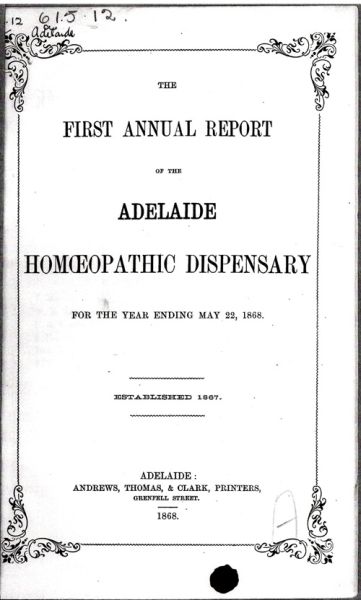
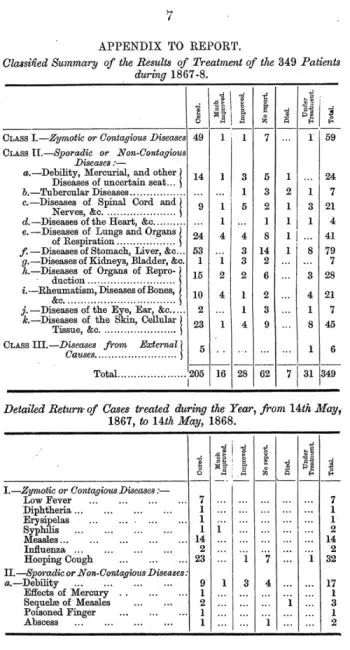

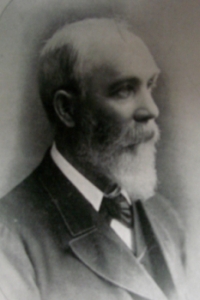

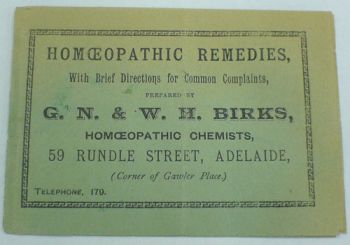
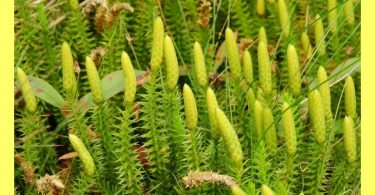
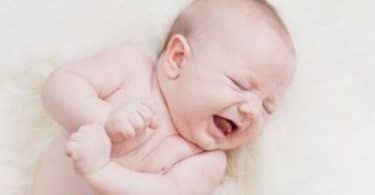
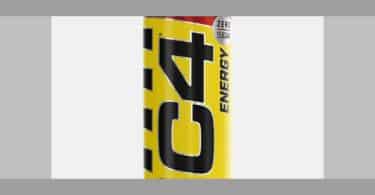

This kind of documents and all the history around all people need to know, not only the people who practice homeopathics.
congratulations
Dear readers,
As mentioned in the disclaimer at the end of Heike’s article, further research into Australia’s homœopathic history since 2005 has indeed uncovered more information, and shed further light onto Australia’s rich homœopathic history. This corrects some significant factual errors in the article which should be noted by serious students of Australia’s homœopathic history.
Just a few examples include:
• Melbourne’s Homœopathic Hospital was not the first such hospital in the Southern Hemisphere. It appears that this credit should go to New Zealand, where Dr C.F. Fischer ran the Auckland Homœopathic Hospital from 1858 to 1862. In 1869 he moved to Australia and continued practice in New South Wales.
• The date cited in Heike’s article for the establishment of the Melbourne Homœopathic Hospital was the date of eventual establishment of the Homœopathic Dispensary in 1869 (following several previous attempts). The all-male committee of the Dispensary made several attempts to establish homœopathic wards in existing allopathic hospitals (during 1869 and 1873), but these submissions were rejected. The Homœopathic Hospital was established later, in 1876, as a result of the efforts of 15 of Melbourne’s most influential women. Initially the Hospital committee was separate from the Dispensary committee, but they eventually amalgamated and joined forces.
• The Gould Pharmacy (the precursor to Martin & Pleasance) was in fact established by Samuel Kidner, as well as Gould, in 1860 (not 1864). It was not the first of its kind in Melbourne, as research has revealed that several homœopathic pharmacies and dispensaries had been established previously.
• Johann Zwar did not, as claimed, become a “registered homœopath” and he was not registered with the Medical Board of South Australia. This board was highly antagonistic towards accepting homœopathic practitioners and homœopathy in general. In fact, Zwar’s name was included in Ludwig Bruck’s well-known “List of Unregistered Practitioners” of 1886.
Readers should also note that the list of references cited in the article contains a number of defunct Internet links, which originally referred to my articles and information which had previously been published on the website http://www.homeopathyoz.org. However, this information has now been moved to the new website http://www.historyofhomeopathy.com.au . This is a website dedicated to Australia’s homœopathic history and is constantly being updated with the results of latest research, as well as corrections to previous assumptions about our homœopathic heritage. Students and researchers should refer to this website for accurate and up-to-date information regarding Australia’s homœopathic history, including more details about the above people and organisations.
Barbara Armstrong
Homœopathic Historian
[email protected]
Muchas gracias por esta valiosa información
Admirable y gratificante para quienes como yo nos ayudamos en el diario vivir con medicamentos homeopáticos que nos permiten conservar y mejorar nuestra percepción gracias a que no sufrimos la interferencia de los componentes de supuestos medicamentos ajenos a nuestra naturaleza
People interested in reading the results of the most recent research into the history of homœopathy in South Australia should also read the following articles:
History Homœopathy South Australia – Part 1: The introduction of homœopathy to Adelaide
http://www.historyofhomeopathy.com.au/articles/item/188-history-homopathy-south-australia-part1.html
History Homœopathy South Australia – Part 2: The Adelaide Homœopathic Dispensary
http://www.historyofhomeopathy.com.au/articles/item/265-history-homopathy-south-australia-part2.html
South Australia’s Unregistered ‘Homœopathists’ of 1886
http://www.historyofhomeopathy.com.au/articles/item/192-south-australias-unregistered-homopathists-of-1886.html
A superb presentation, capturing not only the data, but the atmosphere of the times and the personalities of the players. The author’s’ insights were perceptive and telling. Clearly the author understood what is important in the telling of history.
Thank you Heike Bishop for that enlightening history of homeopathy in South Australia. I never realized the extent to which homeopathy had ingrained itself in Australia. I appreciate the many hours of research that must have gone into this project. I loved the anecdotes.
Yes Janice, homoeopathy has had a long history in Australia. In fact, the earliest Australian reference to homoeopathy I’ve found so far is July 1830, in Hobart, Tasmania (not long after its emergence in England). Homoeopathy’s supporters have included missionaries, rich pastoralists, bishops, businessmen and politicians, as well as women both in towns and in the outback who have treated their family and friends. Homoeopathy went to far-flung areas where there was no other form of medical treatment available. Homoeopathic kits and instructions were specifically advertised for people “in the bush”. For those interested see the article: “Early Knowledge of Homoeopathy in the Australian Colonies” at http://www.historyofhomeopathy.com.au/
Barbara Armstrong
Homoeopathy Historian
everyone must know the history of homoeopathy of different countries .
These histories are very informative , see the struggle and development and most successsful results.
What an intersting and informative article about Homeoapthy in Australia.
I was always under the impression that Homeopathy wasnt that popular in Australia.I was certainly surprised to learn about the Homeopahic Hospitals there
Bev Brown NZ
A good presentation by Heike Bishop, it is a history of Homeopathy in
South Australia you put more data and year. It is more important in history.
Thanks with reg…
Prof S S Rahman
Abu Dhabi
UAE